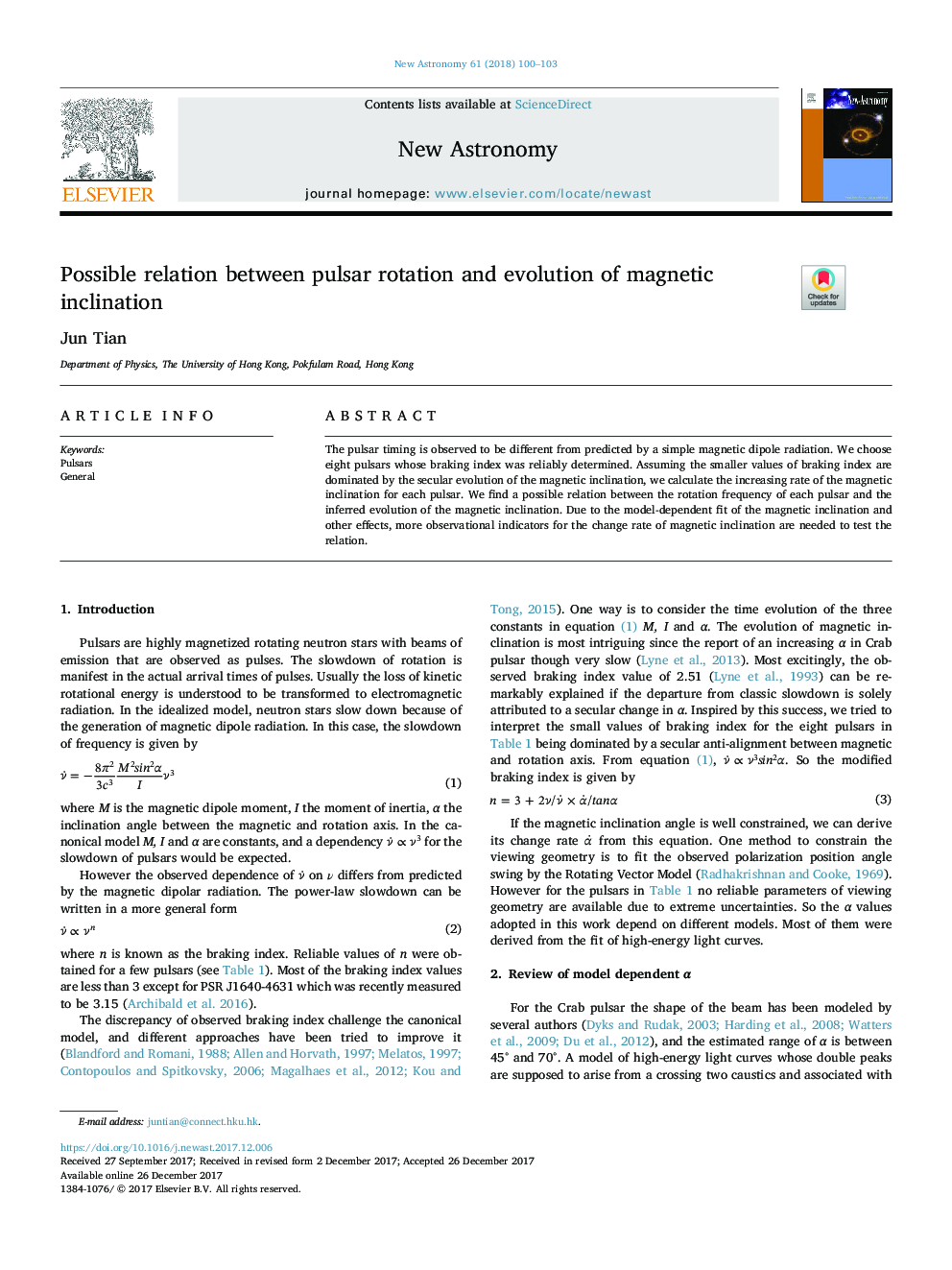| Article ID | Journal | Published Year | Pages | File Type |
|---|---|---|---|---|
| 8141403 | New Astronomy | 2018 | 4 Pages |
Abstract
The pulsar timing is observed to be different from predicted by a simple magnetic dipole radiation. We choose eight pulsars whose braking index was reliably determined. Assuming the smaller values of braking index are dominated by the secular evolution of the magnetic inclination, we calculate the increasing rate of the magnetic inclination for each pulsar. We find a possible relation between the rotation frequency of each pulsar and the inferred evolution of the magnetic inclination. Due to the model-dependent fit of the magnetic inclination and other effects, more observational indicators for the change rate of magnetic inclination are needed to test the relation.
Related Topics
Physical Sciences and Engineering
Physics and Astronomy
Astronomy and Astrophysics
Authors
Jun Tian,
